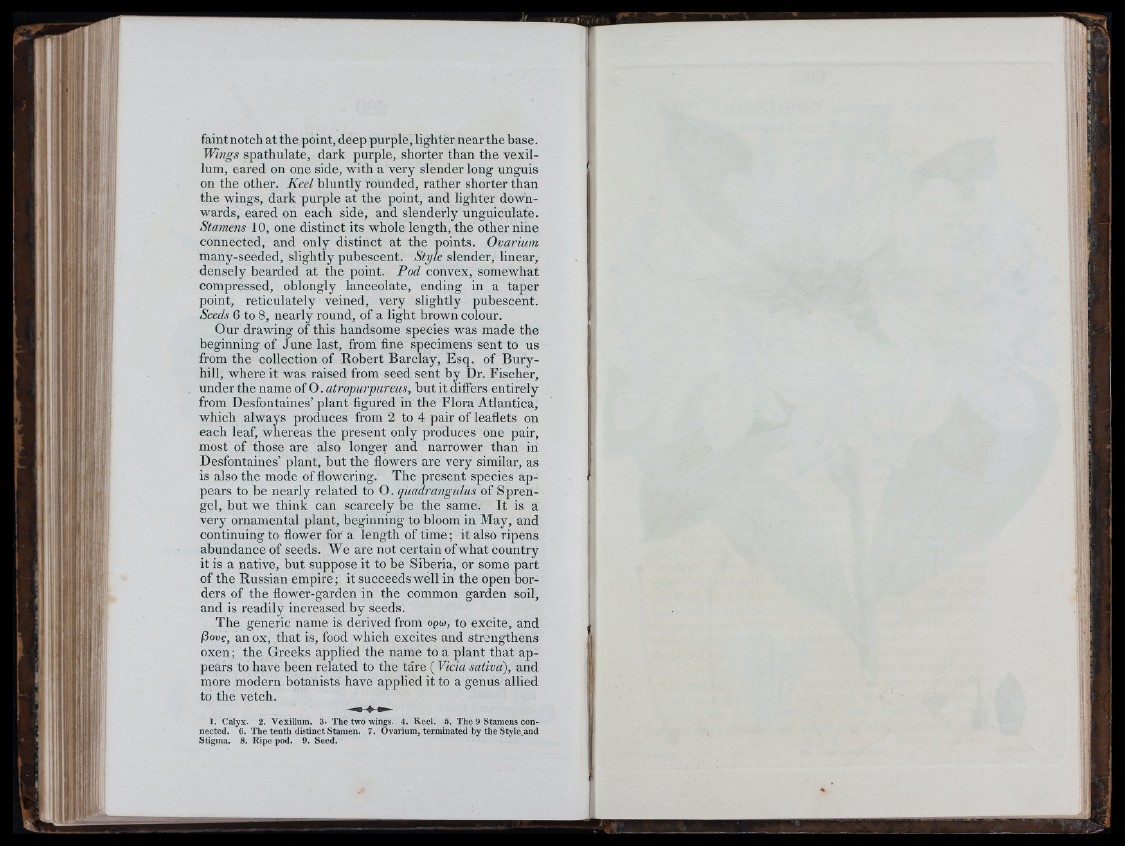
faint notch at the point, deep purple, lighter near the base.
Wi?igs spathulate, dark purple, shorter than th e vexillum,
eared on one side, vrith a very slender long unguis
on the other. Keel bluntly rounded, rather shorter than
the wings, dark purple at the point, and lighter downwards,
eared on each side, and slenderly unguiculate.
Stamens 10, one distinct its whole length, the other nine
connected, and only distinct a t the points. Ovarium
many-seeded, slightly pubescent. Style slender, linear,
densely bearded at the point. Pod convex, somewhat
compressed, oblongly lanceolate, ending in a taper
point, reticulately veined, very slightly pubescent.
Seeds 6 to 8, nearly round, of a light brown colour.
Our drawing of this handsome species was made the
beginning of June last, from fine specimens sent to us
from the collection of Robert Barclay, Esq. of Bury-
hill, where it was raised from seed sent by Dr. Fischer,
under the name of O. atropurpureus, bu t it differs entirely
from Desfontaines’ plant figured in the Flora A tlantica,
which always produces from 2 to 4 pair of leaflets on
each leaf, whereas the present only produces one pair,
most of those are also longer and narrower than in
Desfontaines’ plant, bu t the flowers are very similar, as
is also the mode of flowering. The present species appears
to be nearly related to O. quadrangulus of Sprengel,
bu t we think can scarcely be the same. I t is a
very ornamental plant, beginning to bloom in May, and
continuing to flower for a length of time; it also ripens
abundance of seeds. We are not certain of what country
it is a native, bu t suppose it to be Siberia, or some part
of the Russian empire; it succeeds well in the open borders
of the flower-garden in the common garden soil,
and is readily increased by seeds.
The generic name is derived from opw, to excite, and
ßouc, an ox, that is, food which excites and strengthens
oxen; the Greeks applied the name to a plant th a t appears
to have been related to the tare ( Yieia sativa), and
more modern botanists have applied it to a genus allied
to the vetch.
1. Calyx. 2. Vexillum. 3. The two wings,
nected. C. The tenth distinct Stamen. 7. Ovarium, terminated by the Style.and
Stigma. 8. Ripe pod. 9. Seed.